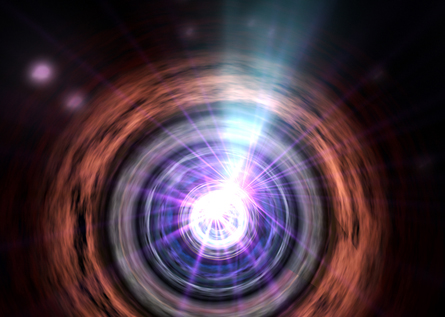- More than 2 years ago
Astronomers say they have detected evidence of how strong the magnetic fields between galaxies must be. The finding helps illuminate how magnetism arose in the cosmos and could one day serve as a probe for understanding processes that happened soon after the Big Bang 13.7 billion years ago.

The new study, published online April 1 in Science, “may be a clue that there was some fundamental process in the intergalactic medium that made magnetic fields,” says Ellen Zweibel, a theoretical astrophysicist at the University of Wisconsin, Madison, who was not associated with the work.
All galaxies contain magnetic fields. The Milky Way’s field is most intense near its center, where its strength is about 1/20,000th the strength of Earth’s magnetic field.
Magnetic fields also permeate intergalactic space, but until now astronomers haven’t known how strong those fields are or how they arose. One “top-down” idea is that all of space was imbued with a slight magnetic field soon after the Big Bang, and this field grew in strength as stars and galaxies amassed and amplified its intensity. Another, “bottom-up” possibility is that magnetic fields formed initially by the motion of plasma in small objects in the primordial universe, such as stars, and then propagated outward into space.
The new work suggests that the top-down option is the right explanation and puts a lower limit on the intensity of the fields.
Andrii Neronov and Ievgen Vovk, of the Geneva Observatory, reached this conclusion by studying blazars, the bright hearts of active galaxies that spew jets of energized particles directly toward Earth. The orbiting Fermi Gamma-ray Space Telescope has spotted a number of these objects, including the brightest one ever seen shining in the gamma-ray portion of the electromagnetic spectrum.
But blazars are more than cosmic beauties; they also provide information about the space the gamma rays have traversed on their way to Earth. Like all electrically neutral particles, gamma-ray photons zoom through empty space unperturbed by magnetic fields. But occasionally a gamma ray will encounter another photon, or particle of light, of much lower energy. The collision causes the gamma ray to splinter into an electron and a positron. Because those two new particles are electrically charged, they are suddenly subject to being deflected by a magnetic field. They later recombine to form a gamma ray again, which proceeds unharmed, but with a lower intensity.
Neronov’s team looked at Fermi data for gamma rays of the intensity that would have arrived at Earth if they had not broken into pieces and been deflected by magnetic fields along the way. Even after including data from the HESS gamma-ray telescopes in Namibia, the researchers did not spot any of these types of rays.
That lack of detection, says Neronov, “tells us that electrons and positrons were deflected. There is nothing else to deflect them but a magnetic field.” That means magnetic fields must exist in intergalactic space with a strength of at least one ten-million-billionths the strength of Earth’s.
“The fact that they’ve put a lower bound on magnetic fields far out in intergalactic space, not associated with any galaxy or clusters, suggests that there really was some process that acted on very wide scales throughout the universe,” Zweibel says.
And that process would have occurred in the early universe, not long after the Big Bang. “These magnetic fields could not have formed recently and would have to have formed in the primordial universe,” says Ruth Durrer, a theoretical physicist at the University of Geneva.
Studying ancient magnetic fields using gamma rays might shed light on processes at work very early in the universe, she says. Currently, the best glimpse astronomers have at the primordial cosmos is the relict radiation, at microwave wavelengths, that permeates the sky as a leftover glow from the Big Bang. Gamma-ray observations could turn out to be an alternative probe, says Neronov.
“It would be a new piece of cosmological information,” he says.







